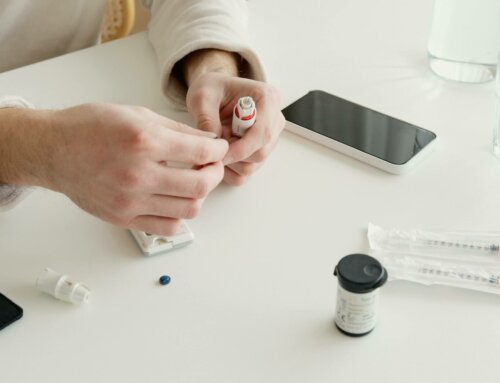In sugar-free foods, no sugar added foods or low carb foods, the sugar (quick digesting “blaster”) is replaced with sugar alcohol (a slow-digesting “trickler”). Sugar alcohol has fewer calories than sugar, is not as sweet as sugar and has a significantly less impact on blood sugar levels than regular sugar. Some common sugar alcohols are: sorbitol, xylitol, mannitol, lactitol, maltitol, and isomalt. As you see, most of the names end in “ol” just as alcohol does. Sugar alcohol is derived from fruits and vegetables. Some people who eat sugar alcohol in excess experience a laxative effect.
Sugar Free Foods
There is no sugar in the food but there may be carbohydrates that turn completely into sugar. (starch, fruit or milk). For example: sugar free cookies are not made with sugar but the flour is a starch that turns completely into sugar. The sugar is replaced with sugar alcohol and, typically, artificial sweeteners to enhance sweetness. What effects your blood sugar in the sugar free cookie is: the flour and the sugar alcohol (to a minor extent). However, if you eat a large portion due to the food being “sugar free” you will see more of a rise in blood sugar.
No Sugar Added Foods
There is no sugar added to the product that already contains some natural sugar. For example: no sugar added ice cream that has milk (lactose is natural milk sugar) already in the product. The processed sugar that is usually found in ice cream will be replaced by sugar alcohol. If you eat a large portion due to the food being “no sugar added” you will see more of a rise in blood sugar.
Net Carbs or Low Carbohydrate Foods
These foods have fewer carbohydrates and therefore less sugar as well. Again, slow-digesting sugar alcohol replaces the quick-digesting sugar so there will be less of a rise in blood sugar levels. Be aware of other macronutrients (carbohydrate, protein or fat) that may be harmful like saturated fat. Saturated fat clogs your arteries and makes your liver produce more cholesterol. The maximum amount of saturated fat recommended for the day is 15-20 grams. More than this amount may contribute to heart disease risk.
The Bottom Line
You may eat sugar free, no sugar added or low carb foods moderately or you may help to slow-digestion by eating a more moderate amount of the low-fat or regular food item and combine it with healthy protein and/or fat. For example, you may have a scoop of low-fat ice cream with chopped nuts. The ice cream may breakdown into sugar quickly, however, the nuts (protein/fat) will help to slow the digestion down and level out the blood sugar. A more healthful choice would be to eat a fruit (carb) with a piece of low-fat cheese (protein and fat) to help to level out blood sugar and avoid spikes and dips.
Additional Resources:
Diabetes Nutrition
Diabetic Food Exchanges
Glycemic Index
Sweeteners












Leave A Comment